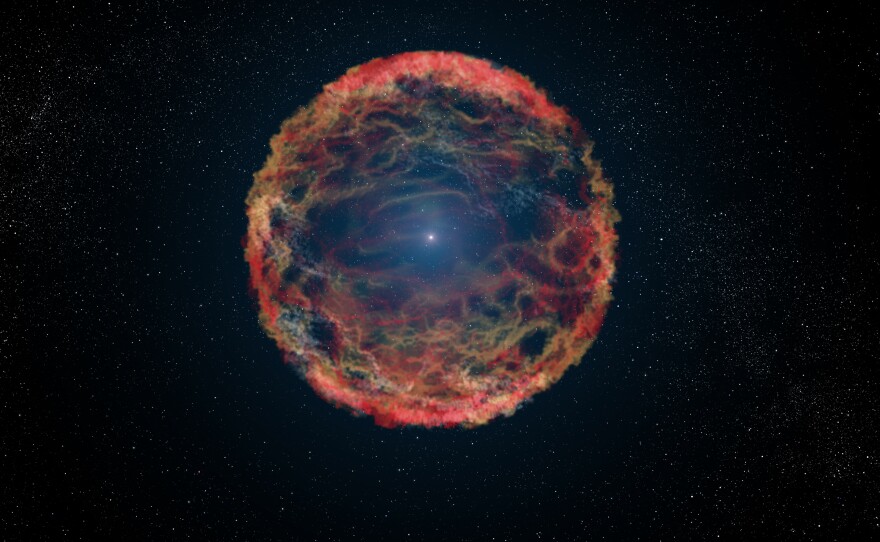Scientists have studied thousands of exploding stars – which are called supernovas – for hundreds of years. They’ve developed an understanding of how they work. But, now, astronomers on the South Coast have observed what they believe is a supernova doing strange things never seen before. Their observations are challenging existing theories about supernovas.
Dr. Iair Arcavi is an astronomer and postdoctoral fellow at Las Cumbres Observatory in Goleta and UC Santa Barbara. He studies the death of supergiant stars that results in a massive explosion known as a supernova.
“Typically, they get bright in a few weeks. They reach a peak luminosity, which is very bright. This one exploding star will outshine all the stars in its galaxy for that brief period and then they decay. They get fainter over a few months and disappear forever,” he said.
But that did not happen in this case. A Caltech survey -- called the Palomar Transient Factory -- discovered a supernova 500 million lightyears away in September 2014. It may be the largest stellar explosion scientists have ever seen at more than 50 times the mass of the sun. Las Cumbres Observatory – also known as LCO – used its network of robotic telescopes around the world to keep a close eye on it.
Arcavi says they observed something scientists have never seen before.
“Unlike every other supernova we’ve seen, it did not get bright and then faint and disappear in a few months. It got bright and then faint and then kind of changed its mind and got bright again and faint again and bright again and faint again five times over the course of the three years we’ve been looking at it. And now it’s finally fading but much more slowly than a typical supernova,” he said.
And that’s not the only unusual behavior, says Dr. Andy Howell, an LCO astronomer and UCSB professor.
“There’s a whole bunch of material flying out of the supernova at really high speed. Usually you only see that high speed material for a few weeks at the beginning of an explosion and then as time goes on, you see deeper and deeper through the explosion to the slow-moving material. But that doesn’t seem to be happening here,” he said.
Howell says an image of this area in the sky was taken back in 1954.
“Nobody had noticed it at the time, but there was an apparent explosion at the spot of this supernova. So, something was happening with this thing in the 50s. But since nobody saw it at the time, nobody was able to follow it and really see what it was doing,” he said.
A series of explosions lasting more than 60 years is a first in supernova science. So, this leads to a big question for Arcavi: How do you know this is a supernova?
“So, we take the light from the supernova and split it up into a rainbow with a prism and then we can see what elements there are and how they’re distributed in space and how fast they’re moving. When we did that for this event, it gave us the same spectrum as the most typical, most common, most boring type of supernova call a Type II P supernova,” he said.
Howell says this supernova could be similar to explosions from the first generation of stars.
“We would have expected all of those to be gone by now. So, we don’t think this was one of the first stars, but it may have been a star that was very low in heavy elements just like the first generation of stars. And then it somehow survived to the present day and just now exploded. So, it’s giving us a peak back in time to see something that our telescopes are not big enough to see normally,” he said.
Scientists are puzzled.
Arcavi says whatever the explanation, this phenomenon must be rare.
“It is the rare things that usually cause us to have to reevaluate all of our theories about a certain subject because this just seems to violate all the rules that we thought applied to supernovae. So, it only takes one counter-example to rethink what we thought we knew,” he said.





